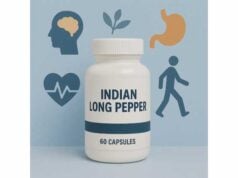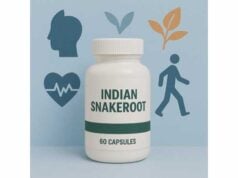
Indian senna (Senna alexandrina, traditionally Cassia angustifolia) is a time-tested stimulant laxative used to relieve occasional constipation and to prepare the bowel before certain procedures. Its active compounds—sennosides—act mainly in the large intestine, where gut bacteria convert them into metabolites that stimulate peristalsis and reduce water reabsorption, softening stool and promoting a complete bowel movement. Senna works predictably within 6–12 hours, which is why most people take it at bedtime. When used short term and at the right dose, it’s effective and convenient. Used carelessly or for too long, it can cause cramping, electrolyte shifts, or dependency-like patterns. This guide translates the pharmacology and guidelines into clear steps—what senna does, how to take it correctly, what to combine (or not), who should avoid it, practical dose ranges by age, and how to troubleshoot common problems—so you can use it safely and get reliable results.
Quick Facts
- Relieves occasional constipation by stimulating colon motility and increasing stool water within 6–12 hours.
- Typical adult dose: 8.6–17.2 mg sennosides at bedtime; adjust to effect and use the lowest effective dose for the shortest time.
- Common effects include cramping and loose stools; prolonged or high-dose use can cause hypokalemia and melanosis coli.
- Avoid if you have suspected bowel obstruction, active inflammatory bowel disease flare, severe dehydration, or are pregnant unless advised by a clinician.
Table of Contents
- What is Indian senna?
- Does it work? Benefits and limits
- How to use it correctly
- Dosage ranges and timing
- Side effects, precautions, who should avoid
- Evidence: what the research shows
What is Indian senna?
Indian senna is the dried leaflet and pod of Senna alexandrina (often labeled as Cassia angustifolia or simply “senna”), a legume traditionally cultivated in India, Sudan, and Egypt. In modern practice it’s sold as tablets, chewables, granules, teas, and syrups standardized to sennosides—anthraquinone glycosides responsible for the laxative effect.
How it works in plain language. After you swallow senna, very little happens in the stomach or small intestine. When it reaches the colon, resident bacteria convert sennosides to rhein anthrone. This metabolite stimulates the colon’s smooth muscle to contract (peristalsis) and reduces the colon’s reabsorption of water and electrolytes. The combined effect: softened, higher-volume stool and stronger propulsive waves that move contents toward the rectum. Because this conversion and action take time, the laxative effect typically appears 6–12 hours after a dose.
What makes senna different from other laxatives.
- It’s a stimulant laxative (like bisacodyl and sodium picosulfate), primarily increasing motility.
- It also has secretagogue-like effects in the colon—less water reabsorbed means moister stool.
- It is predictable: most people can plan a morning bowel movement if they take it at night.
- Compared with osmotics (polyethylene glycol, magnesium), senna acts at lower volumes and is more portable; compared with bulking fibers (psyllium), it works faster but may cause more cramping.
Common uses.
- Short-term relief of occasional constipation (for example, travel, post-operative slowdown, medication-related slow transit).
- Bowel preparation adjuncts (as directed) before colonoscopy or imaging.
- Rescue therapy in chronic constipation when lifestyle changes and osmotics are insufficient—ideally as part of a plan guided by a clinician.
Quality and forms.
- Tablets and caplets list sennosides per tablet (commonly 8.6 mg).
- Teas vary widely; the brew strength and cup size can change the dose dramatically.
- Many branded products (e.g., standardized tablets) have consistent dosing; generic equivalents are common and cost-effective.
What it is not.
Senna is not a weight-loss tool and should not be used for purging. It doesn’t “detoxify” the body; its role is to increase stool water and motility, nothing more. If you find yourself needing it daily for weeks, it’s a sign to reassess the underlying cause of constipation and to consider safer long-term strategies.
Does it work? Benefits and limits
Effectiveness for occasional constipation. Senna reliably increases bowel frequency and stool passage in people with short-term constipation, with effects typically felt the morning after a bedtime dose. Many users experience a single, satisfying bowel movement; some will have two or more softer stools within a half-day window.
Role in chronic idiopathic constipation (CIC). Contemporary clinical guidelines include senna among recommended options for adults with CIC, especially when taken as needed or in short courses. It can be used alone or layered onto a foundation of fiber, fluids, movement, and/or osmotic laxatives. Because stimulant laxatives can cause cramping, the best approach is the lowest effective dose, increased slowly based on response.
Use in special scenarios.
- Opioid-induced constipation (OIC): Senna is often combined with stool softeners or osmotics; if opioids continue, expect to need ongoing support and discuss peripherally acting μ-opioid receptor antagonists with your clinician if first-line measures fail.
- Post-operative slowdown or travel-related constipation: A brief senna course can reset rhythm while you normalize fluids, fiber, and mobility.
- Bowel preparation: Some colonoscopy regimens include a senna component. Follow the exact prep plan provided; don’t improvise doses.
Onset and what to expect.
- 6–12 hours to effect is typical.
- Cramping can occur as motility ramps up; taking senna with a small snack and adequate water may reduce discomfort.
- Stool form tends toward softer or watery if the dose overshoots. Adjust by small steps (for example, by 8.6 mg sennosides) to find your sweet spot.
Benefits beyond “going.” Clearing stool can reduce bloating, abdominal pressure, and discomfort. For people with fissures or hemorrhoids, achieving softer stool that passes without straining can prevent trauma and allow healing—though osmotics and stool softeners are often gentler first steps.
Limits and when not to rely on senna.
- It does not correct low-fiber diets, dehydration, poor mobility, or medication side effects by itself.
- It is not intended for daily, open-ended use without medical supervision.
- If you have alarm features (blood in stool, weight loss, anemia, fever, severe pain, vomiting, or a sudden change in bowel habits after age 45), seek evaluation rather than self-treating.
Bottom line. Senna is an effective, affordable, on-demand tool to restore bowel movements. Used thoughtfully—short term, right dose, clear goals—it’s a practical part of a broader constipation plan.
How to use it correctly
Choose a form that fits your routine.
- Tablets/caplets: Most predictable. Each tablet commonly contains 8.6 mg sennosides. Easy to count and adjust.
- Syrups/drops: Useful if you prefer liquids; confirm the concentration (mg per ml).
- Teas: Pleasant but variable. Steep time and leaf amount change potency; this makes consistent dosing harder.
- Chewables/granules: Convenience versions of standardized doses.
Timing for success.
- Take at bedtime with a glass of water. Expect results in the morning.
- If you’re sensitive to cramping, try a light snack with the dose.
- Avoid taking it within 1–2 hours of other medications if you’ve been told to separate them from laxatives; while senna acts in the colon, spacing is a sensible precaution for narrow-therapeutic-index drugs.
Build a “constipation stack” thoughtfully.
- Foundation: fluids, regular meals, daily movement, and food fiber (vegetables, legumes, fruit, whole grains).
- Bulking or osmotic agent: psyllium husk or polyethylene glycol for daily maintenance if needed.
- Senna for rescue: add 8.6–17.2 mg sennosides at bedtime on days you feel backed up or per your clinician’s plan.
- Titrate: if no movement by the next morning, increase by 8.6 mg the following night. If stools are too loose, step back down.
Combining with other laxatives—smart pairings.
- With osmotics (PEG): common and effective; PEG draws water, senna propels.
- With stool softeners (docusate): helps reduce straining in fissures or post-partum recovery.
- Avoid combining with other stimulants (e.g., high-dose bisacodyl) unless instructed; it increases cramp risk.
- Avoid magnesium at high doses if you have kidney disease; discuss osmotic choices with your clinician.
Everyday troubleshooting.
- No results after one night: confirm your dose and hydration; consider adding an osmotic base during the day and retry senna that night.
- Cramping: reduce dose, add a warm beverage, and try gentle walking; if persistent, switch to an osmotic.
- Too loose: decrease by 8.6 mg, or skip that night and rely on hydration and fiber the next day.
- Bloating persists: rule out low fiber, gas-producing foods, or underlying conditions; consider a different class of laxative.
Storage and travel.
- Keep sealed, away from moisture and heat.
- Pack standardized tablets for predictable dosing across time zones.
When to stop self-treating and seek care.
- If there’s no improvement within 7 days, or you need senna most nights, get medical advice.
- If you develop severe pain, fever, vomiting, or blood in stool, stop and seek urgent evaluation.
Dosage ranges and timing
Adults (12 years and older).
- Start with 8.6–17.2 mg sennosides at bedtime (commonly one to two 8.6-mg tablets).
- If needed, titrate by 8.6 mg per night. Many adults find 17.2 mg effective; some require up to 25–34 mg short term.
- Use the lowest effective dose for the shortest duration. If you need more than a few nights per week, add a daily maintenance strategy and speak with your clinician.
Older adults.
- Begin conservatively (for example, 8.6 mg). Monitor for lightheadedness on standing and electrolyte issues if use extends beyond several days. Pairing a gentle osmotic may reduce cramping.
Children (consult a clinician for persistent constipation).
- Ages 6–12: commonly 8.6 mg at bedtime as needed; some products recommend ½ to 1 tablet based on weight and response.
- Ages 2–6: much smaller doses (~4.3 mg) exist in pediatric formulations.
- Under 2 years: do not use unless specifically directed by a pediatric clinician.
Pregnancy and lactation.
- Pregnancy: prioritize non-pharmacologic measures and osmotics; stimulants may be used short term on advice of a clinician.
- Lactation: usual senna doses are generally considered compatible with breastfeeding; occasional infant loose stools have been reported. If they occur, pause and discuss alternatives.
Procedure prep.
- Follow the exact colonoscopy or imaging prep script provided by your clinic. DIY regimens risk inadequate cleansing or dehydration.
Timing window and expectations.
- Dosing at bedtime aligns with the 6–12 hour onset. If you need to be out early, consider an earlier evening dose on a trial day at home.
Avoid “chasing” higher doses.
- More is not always better; above a threshold, you trade minimal additional benefit for more cramping and loose stools. If you consistently need higher doses, step back and reassess the plan.
Side effects, precautions, who should avoid
Common, mostly dose-related.
- Cramping and abdominal discomfort as peristalsis increases.
- Loose stools or urgency if the dose is too high.
- Mild nausea in sensitive users.
Less common but important.
- Electrolyte disturbances (especially hypokalemia) with prolonged or high-dose use, raising risk of weakness, arrhythmias, and drug interactions (e.g., with digoxin).
- Dehydration if diarrhea persists without fluid replacement.
- Melanosis coli, a benign dark pigmentation of the colon lining associated with chronic anthraquinone use; it typically resolves after stopping but flags overuse.
- Dependence-like patterns: needing stimulant doses to trigger a bowel movement can occur after long, frequent use; this is usually reversible with a structured step-down plan and maintenance therapies.
- Allergic reactions are rare but possible (rash, itching, swelling).
Drug and condition interactions.
- Diuretics, corticosteroids, or amphotericin B: increased risk of low potassium.
- Digoxin or QT-prolonging drugs: electrolyte shifts can enhance toxicity—monitor closely.
- Warfarin: diarrhea and reduced vitamin K absorption may alter anticoagulation control; monitor INR per clinician guidance.
- Kidney disease: avoid dehydration and aggressive stimulant use; favor osmotics selected by a clinician.
- Inflammatory bowel disease flares, bowel obstruction, strictures, severe abdominal pain of unknown cause: do not use; seek evaluation.
- Eating disorders or laxative misuse history: avoid stimulants; work with a healthcare team on safer bowel plans.
Who should avoid senna or seek guidance first.
- Pregnant individuals (unless specifically advised).
- Children under two years.
- Anyone with alarm symptoms (blood in stool, fever, unexplained weight loss, anemia, night sweats, severe pain).
- People with significant heart or kidney disease should not self-treat recurrent constipation without medical input.
Practical safety tips.
- Use short courses, not indefinite nightly dosing.
- Drink adequate fluids; add electrolyte-rich fluids if you have loose stools.
- Pair with a maintenance strategy (fiber, osmotic, movement) to reduce the need for repeat stimulant doses.
- If you notice black stools, severe cramps, persistent diarrhea, or weakness, stop and seek care.
Evidence: what the research shows
Mechanism and pharmacology. Modern pharmacology describes sennosides as pro-drugs converted by colonic bacteria into rhein anthrone, which directly stimulates mucosal and muscle activity in the colon and reduces water reabsorption. Prostaglandin signaling, epithelial transport changes, and effects on colonic motility patterns explain the typical timing and stool softening. This selective colonic action is why senna doesn’t usually cause small-bowel cramping.
Clinical effectiveness in adults. Current gastrointestinal practice guidelines include senna among the recommended pharmacologic options for chronic idiopathic constipation in adults, alongside osmotics (e.g., polyethylene glycol), other stimulants (bisacodyl), and newer secretagogues and prokinetics. Senna’s place is often as an accessible, low-cost therapy—used alone for occasional constipation or layered in short-term pulses when a maintenance plan needs a boost.
Safety profile—what long-term data say. Reviews of stimulant laxatives report no convincing evidence of increased colon cancer risk. Melanosis coli—the brownish pigmentation often seen with long use of anthraquinone laxatives—appears benign and tends to reverse after cessation. The main long-term concerns are electrolyte disturbances, cramping, and overreliance on stimulants when maintenance strategies are underused.
Pregnancy and lactation. Evidence suggests usual senna doses are compatible with breastfeeding, with no consistent adverse effects in infants in modern studies. During pregnancy, clinicians generally prefer non-pharmacologic measures and osmotics first; stimulants may be used short term when benefits outweigh risks.
Comparisons with other therapies. In head-to-head and guideline syntheses, senna shows meaningful improvements in bowel frequency and stool consistency versus placebo. Osmotics often have a gentler side-effect profile but require more fluid and time; stimulants like senna are faster but more likely to cause cramps. Many patients do best with combination regimens, tailored to their pattern (slow transit vs. outlet dysfunction) and preferences.
Practical takeaway from the literature. Use senna as a targeted, short-term tool within a broader plan. Confirm dose in mg of sennosides, align timing with the expected 6–12 hour onset, and monitor electrolytes if use extends or if you have comorbidities or interacting medications. If constipation is persistent or complicated, move beyond self-treatment to a structured evaluation and long-term plan.
References
- American Gastroenterological Association-American College of Gastroenterology Clinical Practice Guideline: Pharmacological Management of Chronic Idiopathic Constipation (2023) (Guideline)
- Pharmacology, Toxicology, and Metabolism of Sennoside A, A Medicinal Plant-Derived Natural Compound (2021) (Review)
- Senna – Drugs and Lactation Database (LactMed®) (2024) (Guideline)
- Melanosis Coli – StatPearls (2023) (Review)
- Review article: do stimulant laxatives damage the gut? A critical review of our understanding (2024) (Systematic Review)
Disclaimer
This guide is for educational purposes and is not a substitute for personalized medical advice, diagnosis, or treatment. Do not use Indian senna if you suspect bowel obstruction, have severe abdominal pain of unknown cause, active inflammatory bowel disease flare, or significant dehydration. If constipation lasts more than seven days, or if you notice blood in your stool, fever, unintended weight loss, or new weakness, contact a qualified healthcare professional promptly. If you take heart, kidney, or blood-thinning medicines, or are pregnant, seek medical guidance before using stimulant laxatives.
If you found this article helpful, please consider sharing it on Facebook, X (formerly Twitter), or your preferred platform, and follow us for future updates. Your support helps us continue producing balanced, evidence-informed guides.










